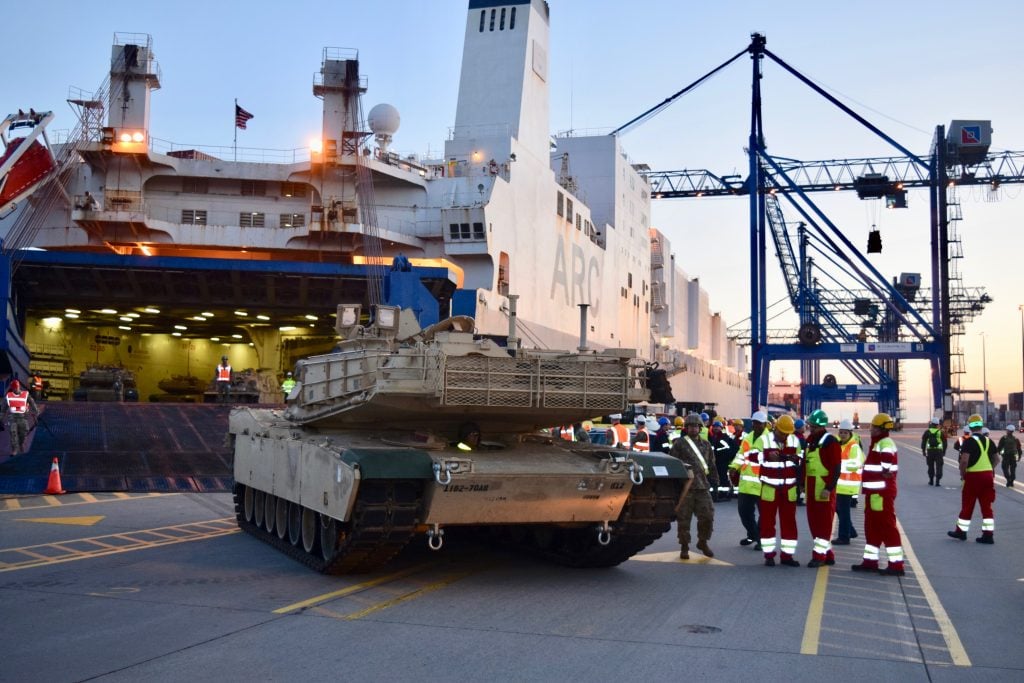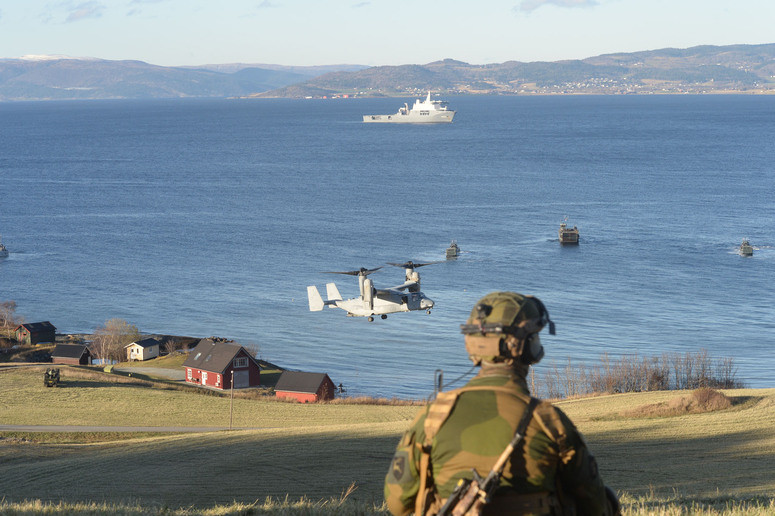Massive NATO Wargame Seeks To Shore Up Fraying Alliance
Posted on

A US Army M1 Abrams heavy tank unloads from a transport ship.
WASHINGTON: Next spring, the Army will deploy 20,000 US-based soldiers to Europe to operate alongside 17,000 allied troops in the massive Defender-Europe 20 exercise. It will be the US Army’s largest troop movement in 25 years, spreading its forces across Central Europe, Eastern Europe, and Georgia in a test, not only of Army logistics, but the ability of US forces to link up with allies.
Defender 20 is just the latest in a series of massive, multinational exercises in Europe over the past year that emphasize how — despite international anxiety over President Trump’s mercurial policy shifts — the Pentagon is doubling down on its traditional alliances. This week in Washington, more collective defense cooperation will be on display at the massive AUSA 2019 conference, attended not only by US soldiers from four-star to private but by companies, officials, and troops from 92 different nations, including the chief generals of 13 armies.
The two-month Defender 20 war game will test the Army’s ability to fight using its emerging concept for future conflict, multi-domain operations, and “rapidly project forces across the globe while operating alongside our allies and partners in multiple contested domains,” Lt. Gen. Charles Flynn, Army Deputy Chief of Staff for operations said in a statement. (The five doctrinally recognized domains are land, sea, air, space, and cyberspace; multi-domain ops envisions a relentless, coordinated effort over all five).
“Readiness is not only about having the right forces and capabilities in place throughout the theater, it’s about exercising our ability to quickly receive and integrate forces with our own and those of our allies and partners,” Lt. Gen Christopher Cavoli, US Army Europe commanding general, said in a statement.

US and NATO aircraft and ships operate during the Trident Juncture exercise in Norway in November.
The exercise follows on last September’s Trident Juncture exercises up in Norway, which marked the alliance’s largest and most ambitious undertaking in decades, featuring 40,000 ground troops from all 29 NATO members, 70 ships, 150 aircraft, and 10,000 ground vehicles, all under the command of the US Navy’s Adm. James Foggo, head of the Joint Forces Command Naples.
That exercise tested the ability of the various forces to work — and communicate — as one, something that remains a work in progress as NATO allies continue to hack through their tangled web of communications and classification systems. But tighter coordination remains a key goal for the alliance as it faces an unpredictable Russia busily chipping away that the edges, using disinformation, cyber attacks, and proxies to expand its influence while weakening democratic and social institutions in the West.
“The U.S. military does not fight alone,” Defense Secretary Mark Esper said recently. “Just like the other warfighting domains our cyber capabilities are enhanced by a strong network of allies and partners. Our ability to share information and operate on common communications networks serves as a force multiplier — but it also comes with increased risk.”
The risk, specifically, is electronic warfare — the triangulation, jamming, or spoofing of radio and radar signals — or cyber warfare using corrupted software or hardware on systems used by the US or its allies. “Our adversaries see cyberwar as a way to take on the U.S. and impose costs without confronting our traditional strengths,” Esper said.
The ambitions for Defender go beyond testing out the MDO concept. Army Undersecretary Ryan McCarthy told reporters recently Defender would serve as a smaller version of the massive Cold War REFORGER exercises — Return of Forces to Germany — that rehearsed rapid deployment to Europe in the event of a Soviet invasion.
One element of the closer coordination that NATO has spoken so much about is a new acquisition effort being undertaken within the alliance to pool resources to buy more munitions, signaling a new push to project power across the alliance and allow smaller members to punch harder.
Late last year, Belgium, Denmark, and non-NATO ally Austria pooled resources to take delivery of $20 million worth of air-to-ground precision guided munitions with an aim to share them on an need-to-have basis. The plan is to continue restocking NATO while making an end-run around decades of slow-moving and regulation-heavy procurement, which has made it hard to share munitions that most NATO members used without mounds of red tape.
The plan is still in its early stages, but the pooling effort, along with stepped-up exercises focused on new operating concepts and sharing battlefield information more quickly, could result in a more nimble, more coordinated, more effective NATO. But only if everyone keeps up their end of the bargain.
Subscribe to our newsletter
Promotions, new products and sales. Directly to your inbox.
